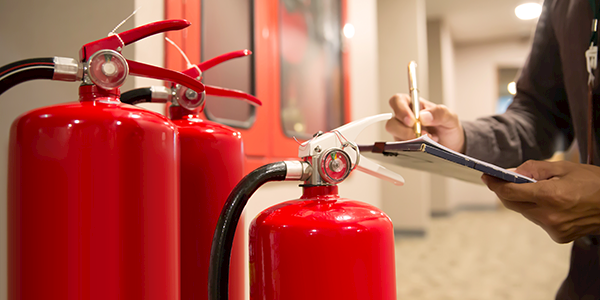
By implementing preventive measures, conducting regular risk assessments, and providing appropriate training, organisations can reduce the likelihood of fire incidents and minimise potential damages.
Who Is Responsible for Meeting Fire Risk Obligations?
The legal obligations to manage fire risk for commercial properties in the UK lie with the appointed Responsible Person (or Duty Holder in Scotland). It is their responsibility to ensure there is adequate fire protection and an up-to-date fire risk assessment where the requirements are conducted satisfactorily.
If there is no Responsible Person appointed, the employer or the person who controls the premises becomes the Responsible Person by default, as stated in the Regulatory Reform (Fire Safety) Order 20051.
The Importance of Fire Risk Assessments
A fire incident can have devastating consequences, making fire risk assessments crucial. These assessments are essential for the following reasons:
- Legal Compliance: The Regulatory Reform (Fire Safety) Order 2005 legally obligates the Responsible Person (or Duty Holder) to assess fire risks and implement measures to mitigate them. Failure to comply with this requirement can lead to prosecution and penalties.
- Safety: Regular assessments help ensure the safety of employees, visitors, and other individuals who may be present in the premises by identifying and addressing potential fire hazards.
- Prevention: By identifying and addressing fire risks proactively, regular assessments contribute to the prevention of fire incidents, reducing the likelihood of harm to people and property.
- Adaptation to Change: Conditions within premises can change over time, such as alterations to the layout, occupancy, or processes. Regular assessments allow for these changes to be considered and adjustments made to fire safety measures accordingly.
- Awareness and Training: Fire risk assessments raise awareness among staff / occupants about fire hazards and the importance of fire safety measures. They also inform training and evacuation procedures, ensuring that staff / occupants are adequately prepared in the event of a fire.
Conducting Fire Risk Assessments
When looking to conduct a fire risk assessment, consider the below2:
Step 1 – Identify fire hazards at your premises or workplace
During this phase, you need to look for sources of ignition that could potentially start a fire. You should also identify fuel sources and potential oxygen sources within your business, and analyse structural features such as flues, ducts, gaps in firewalls, large amounts of flammable materials, and vacant attic spaces that could contribute to fire spread.
Step 2 – Identify those most at risk
In this phase, you should look to safeguard individuals who may be particularly vulnerable in the event of a fire. This includes:
- Residents in a multi-use building or employees.
- Large groups of people.
- Lone workers or those in isolated areas.
- People with impairments or disabilities.
- Parents with infants or elderly family members.
- External contractors, temporary workers, visitors, or agency staff.
Step 3 – Evaluate, improve, and decide on the adequacy of current fire safety measures
During this phase, assess fire risk, consequences, and ratings, then develop actionable measures within a set timeframe. This step is crucial for mitigating fire risk and enhancing safety protocols.
Step 4 – Document your findings, create an emergency plan, and educate
Document findings, create an emergency plan, and provide training to all potentially affected individuals. Identify hazards and at-risk individuals and use the appropriate fire safety assessment form. Develop a specific emergency plan for your premises, obtain guidance from local fire services or online resources, and inform all parties about fire risks. Certain individuals may need additional training. This step is vital for everyone's safety during a fire emergency.
Step 5: Regularly review
Regularly reviewing your fire risk assessments is crucial to maintain their accuracy and relevance to your premises' current risks. Risks can evolve due to a range of factors, and an outdated assessment could leave you unprepared for potential fire hazards. In the event of a significant change in risk levels or a near miss, promptly revisit and update your fire risk assessment.
How Gallagher Can Help?
To speak with a member of our friendly risk management team about any of the content in this article or how we can help you with any of your risk management requirements, 0800 138 7538.


